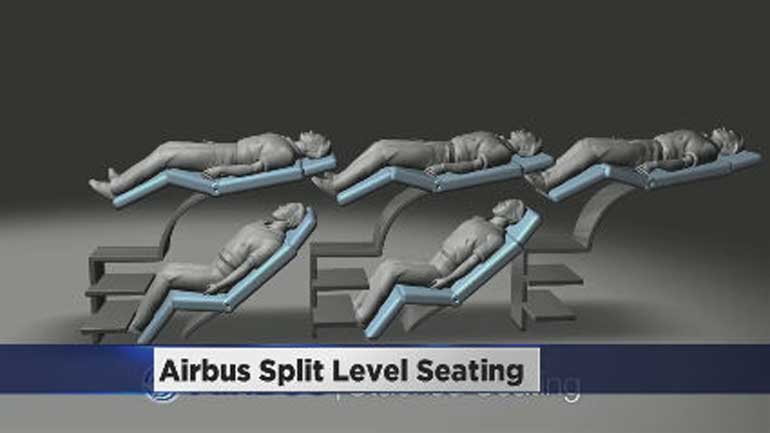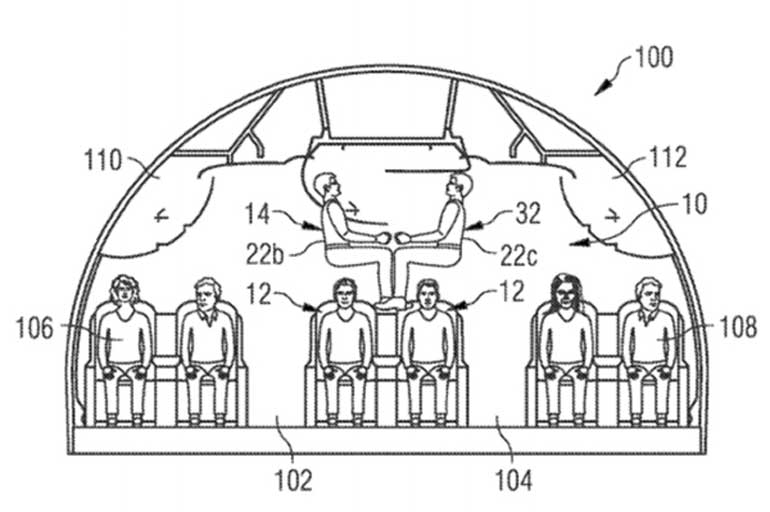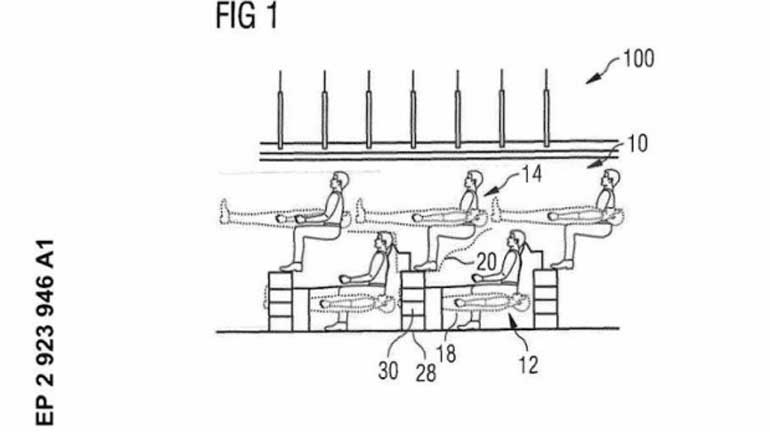Tuesday Jan 28, 2025
Tuesday Jan 28, 2025
Monday, 12 October 2015 00:00 - - {{hitsCtrl.values.hits}}



PARIS (Reuters): Airlines already know how to pack ‘em in, but in future they may be able to pile ‘em high thanks to a blueprint for split-level seating invented by planemaker Airbus.
The company that introduced the double-decker A380 jetliner says in a patent filed on 1 October that having two storeys of seating inside the same cabin would help airlines make best use of space at a ‘high level of comfort’.
A mezzanine level would be reached by steps and placed above the heads of other travellers.
To avoid claustrophobia, the space between the two levels would increase when the seats are turned into flat beds. That could be done either by lowering the floor on the lower level or raising the floor above as soon as beds are deployed.
It is one of many unusual cabin-industry concepts from stand-up seats to 3D-moulded shells, some of which have captured attention but most of which never see the light of day.
“They are covering themselves for what the future may or may not hold, but ... there is no intention to bring this to a real design for any near-term scenario,” said cabin interiors expert Mary Kirby, founder and editor of Runway Girl Network.
Airlines and planemakers have for years been squeezing more seats into the same row in order to be more efficient, prompting research into how to avoid complaints from passengers.
The patent, filed in the United States (http://1.usa.gov/1GyDGkb), seeks to make better use of the wasted ceiling space of large modern jets, but would be complicated to put into practice. “The flying bunk bed has a raft of health and safety concerns. The obvious number one is the regulatory requirement for safe evacuation of passengers in 90 seconds,” Kirby said.
“It doesn’t take into account the elderly or passengers with reduced mobility or children or pregnant women.”
Airlines would also need to know more about passengers when selling those tickets, straining reservation systems.
“Airbus files hundreds of patents each year,” it said in an emailed statement. “However, it does not mean that the idea described in the patent is being developed for any particular production application.”
Latvia’s airBaltic said it welcomed such innovations.
“airBaltic is one of the innovative airlines that is happy to test new things. New seats may get a lot of hype, but the customers are the final decision makers,” a spokesman said.